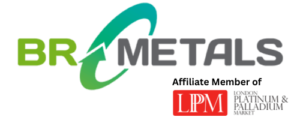XRF (X-ray fluorescence) and ICP (Inductively Coupled Plasma) analysis are two widely used and accepted methods for the analysis of Platinum Group Metals (PGM) in catalytic converters. As PGM prices become increasingly volatile and competition for spent catalytic converters intensifies, recycling companies that provide the most precise and transparent analysis of these precious metals will help their customers secure better returns for their materials.
At BR Metals, we use a two-step analysis method comprising X-ray Fluorescence Spectroscopy (XRF) and Inductively Coupled Plasma Optical Emission Spectroscopy (ICP-OES). XRF is used for preliminary analysis to pay customers 80% value of their catalytic converter scraps within 3 working days upon receiving their materials while the remaining 20% is settled no later than 14 working days using the result from ICP analysis.
Our laboratory only uses top-of-the-range equipment and our team of chemists are adept at performing a wide range of precision analyses with results that consistently match up to top refineries and independent third-party analysis labs. This means we are able to put a true value to scrap converters and help our customers manage market risk because they have the flexibility to “fix” and cash out their precious metal ounces at different times.
If you are still selling your converters by piece or code, and unsure what these two assay methods are and how they work in the analysis of Platinum Group Metals, here is the lowdown.
XRF
Given the price volatility of Platinum Group Metals, it is pertinent to determine quickly and precisely the precious metals content in our customer’s spent catalytic converters. X-ray Fluorescence Spectroscopy (XRF) is often used for the preliminary analysis of PGM value, and the most common analysis instrument is the benchtop XRF because it is easy to operate with improved accuracy in the recent years. However, accurate results can only be obtained through proper machine calibration and sample preparation. The latter is especially critical, and involves de-canning and extraction of the honeycomb-structured ceramic core from the auto catalyst steel container, followed by crushing, milling and blending of the material before it is pulverized to a fine powder and loaded into sample cups or sample bags. The sample has to be homogeneous and representative of the lot to obtain accurate results from XRF analysis.
For converters with metallic substrates, they are first shredded or milled, and then the metallic parts are separated using magnets and winnowed from the wash coat powder containing precious metals. Due to this enrichment, the PGM content of these wash coat samples is typically higher than that of milled ceramics.
The sampling processes for both ceramic and metallic substrates require sound technical knowledge and the right equipment. At BR Metals, we have the patented technology and expertise to deliver gold-standard sample results delivery.
Wet Chemical Analysis Using ICP-OES
Wet chemical analysis using ICP-OES is one of the most accurate and cost-efficient methods to analyse platinum group metals (PGMs) because only very low levels of PGMs is needed to yield a high level of accuracy, particularly for Platinum. This method is destructive but it can determine both major and trace elements in secondary materials with better precision than XRF analysis.
Most PGM refineries use ICP-OES because it has higher sensitivity, a wide dynamic range, no molecular interferences, and has multi-element detection capability in a single analysis, which translate into fast, precise results within a shorter timeframe.
The most challenging aspect of ICP analysis is in the sample preparation, where the milled and homogenised ceramic substrate is digested into chemicals. It takes a skilled and experienced chemist to prepare the sample, run the equipment effectively and ensure that the analysis results match those from the major PGM refineries.
Our team of chemists and technicians regularly participates in exchanges of test results with a panel of independent international laboratories, and our analysis results match up with theirs. These Round Robins help our team to keep abreast of international analysis standards and ensure our customers get the maximum returns for their catalytic converter scraps.
We also actively encourage our customers to witness the entire analysis process at our laboratory, and should a dispute arise, they have access to their sample for analysis at a third-party lab. Such is our commitment to transparency and confidence in our analysis capability.
ICP vs XRF
Technology-wise, the two methods are different and each has its merits. These methods are usually part of a 2-step analysis process as most recycling companies will conduct a preliminary and final analysis for a sample by XRF and ICP-OES respectively. No matter what method is used, the sampling will always play a central role in influencing the rest of the process, including the selection of the appropriate equipment. At BR Metals, we have the expertise and patented equipment to not only ensure the samples are representative and in the appropriate form, but also the accurate analysis of samples.
We hope you would find this article useful. If you have any questions about catalytic converters recycling or would like to find out how to get the best value out of your catalytic converters recycling lot, please email us at info@brmetalsltd.com or https://www.brmetalsltd.com/contact-us/





